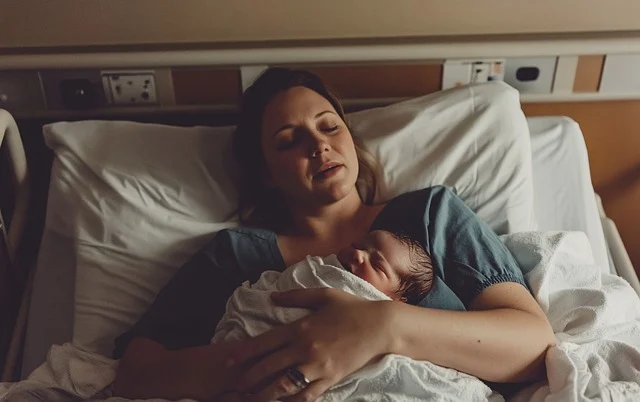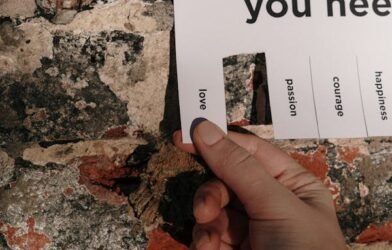|
Getting your Trinity Audio player ready...
|
Introduction
Let’s be honest—the postpartum recovery process is not a joke, even if bringing a baby into the world is an incredible occasion. Whether your birth was vaginal or a C-section, your body has changed dramatically, recovery takes time.
Many Newly Pregnant Women Wonder
- How long does postpartum recovery last?
- When will I be once more feeling like myself?
- What is typical during recovery—and what is not?
- How varying is C-section recovery?
If you feel overwhelmed, know not to panic—you are not alone! This Blog breaks postpartum recovery each week by week with reasonable expectations and professional advice to help you heal, rest, and take care of yourself.
Timeline Postpartum: Week by Week
Even if every woman’s postpartum route is different, this general plan will enable you to know what to expect during recovery.
The first week: The immediate fallout
The first week after birth is a whirl of feelings, exhaustion, and adjusting to your new normal.
- Vaginal Birth Recovery: Expect a somewhat heavy period—that of lochia; especially, if you had sews or perineal pain.
- As your uterus contracts back down, afterbirth contraction.
- C-section recovery; swelling and incision pain will require careful movement.
- Two to four-day hospital stay before going home.
- Bloating and gas associated to surgery.
Week 1 advice: Use peri bottles for vaginal birth; abdominal binders for C-sections
- Use stool softeners; genuine constipation exists!
- Get as much sleep as you can—even tiny naps add up.
Second week: under control hemorrhage and soreness
By now you might start to feel considerably better, although still different from usual.
Right now, what’s happening?
- Bleeding should start to decrease but still exist.
- One could still very obviously feel vaginal agony.
- Though it still exists, C-section incision discomfort is getting better.
- Nursing could cause engorgement and pain in the breasts.
Pointers for the second week
- Keep icing and, should painkillers be required, keep taking them.
- Go for loose, airy underwear to avoid itching.
- Eat foods heavy in fiber to avoid constipation; drink plenty of water as well. Visit your doctor if you have a fever or severe stomach ache; your C-section incision is red, swollen, or bleeding.
Third and fourth week: creating a calendar and gaining momentum
While you are becoming used to living with a newborn by weeks three and four, healing is still under development.
- Symbolize if something is occurring.
- Bleeding should either stop completely or be somewhat minimal.
- Hormones shift; typical are mood swings and baby blues.
- You could start light movement.
- Should you have a C-section, your scar will be uncomfortable but healing.
Guideline for Weeks 3-4
- Start a little while walking to boost blood flow.
- Use a belly wrap for additional core help—particularly after a C-section.
- Please help! NOT the moment to start all of it yourself right now. You should call your doctor if you feel depressed, anxious, or hopeless—indices of postpartum depression.
Beginning to feel like yourself in weeks five and six
Usually starting six weeks, most mothers start to feel more active; still, you are healing.
- Right now, what’s happening?
- You could be cleared for limited activity after your doctor approves.
- Hormones start to steady—less moodiness.
- Mothers having a C-section should also avoid too much lifting.
Notes for Weeks Five and Six
- Ease into exercise—think of yoga, strolling, or light strength activities.
- Use Kegels to strengthen the pelvic floor.
- Arrange your six-week postpartum visit. You should see your doctor if you have urine or stool leakage or if you experience pelvic pressure or pain when standing—could be pelvic floor dysfunction.
Weeks seven through twelve: growing strength and confidence
Even if complete healing can take months, by now you could feel more like yourself.
Now, what is happening?
- Rising energy sources
- While they are healing, C-section scars can still be painful or numb.
- You might start more deliberately—slowly!
Guidelines for Weeks 7–12
- Pay attention to your body; adopt moderate exercises.
- Scar massage helps repair a C-section.
- Put on supportive leggings to work your core.
C-sections: Extra Advice for Healing
Following advice will assist to minimise pain and speed healing even if C-section recovery takes more time than vaginal birth.
1. Move lightly but often; walking speeds up recovery and helps prevent blood clots.
2. Hold a pillow against your tummy as you cough, laugh, or stand up.
3. Keep current with painkillers.
4. See a doctor as necessary; wait for suffering to become intolerable.
6. Keep your scar dry and clean; dress lightly and avoid cleaning the incision line.
5. Don’t Lift Anything Particularly Heavy for at least six weeks follow the “nothing heavier than your baby” rule. If your scar opens or leaks pus, or if you have redness, fever, or worsening pain, call your doctor.
Emotional Healing: Never Forget Mental Health
- Recovering postpartum has emotional as much as physical aspects. Many women experience: Baby blues (up to 80% of mothers—mood swings, anxiety, and crying spells).
- Postpartum depression (PPD), either apathetic, weary, or persistent sadness.
- Postpartum anxiety (PPA), either panic attacks, racing ideas, or ongoing concern.
Coping: How one?
- See a spouse, relative, or therapist.
- Join a mother support group either online or in person.
- Get outside often; sunshine and fresh air help! See your doctor if your depression or anxiety spans more than two weeks.
- You find yourself unable to relate to your child.
- You find yourself considering injuring either yourself or your child.
Story: Emily’s unexpected C-section and slow road to recovery
Emily had planned an unmedicated vaginal birth, but her doctor informed her she needed an emergency C-section after 20 hours of labor and little progress. She broke.
“I thought of myself as having failed. Having spent months preparing for a natural birth, I was being taken into surgery today. I was terrified, tired, and overawed.
Emily’s baby boy arrived healthily, and the operation went without a hitch. Still, the recovery proved far harder than she had expected.
” I could hardly get around in the first few days. Every cough, every laugh, even getting out of bed felt like my body was separating. I remember crying since I couldn’t free my child of suffering.”
One day, she reached her lowest point. She was seated in bed cuddling her son when she saw her husband doing all the diaper changes, making meals, and keeping the house running.
“I broke down telling him I felt useless. But he turned to look at me and said, ” Emily, you simply carried our child into the world. That is the most incredible act one could perform.
Right then Emily started to treat herself with grace. She welcomed help, allowed her body to heal at its own pace, and honored minor achievements like washing alone or walking to the kitchen free from pain.
By week six she at last felt as though a turning point was about to dawn. She could pick up her child, go on quick walks, and—most importantly—she stopped feeling as though she had failed. She still treated her scar with sensitivity.
Lesson: Though C-section recovery is challenging, it makes all the difference to give yourself time, get help, and acknowledge minor successes.
Story: Rachel’s Fight with Postpartum Depression and Reaching Joy Once More
Rachel had a flawless vaginal birth, and physically she seemed to be recovering flawlessly. However? She became empty.
“I should have been happy. I turned forth a beautiful, healthy baby daughter. But I felt almost like a stranger in my own life.’’
Every morning she would get up numb, worried, and exhausted. She lacked the instantaneous bond she had imagined between her and her child. She cried for no apparent cause and simply wanted to disappear at times.
“I felt guilt pouring over me. Everyone told me to enjoy every moment, but all I wanted to do was curl into bed and spend some time by myself.”
At her six-week postpartum appointment, her doctor asked kindly, “How are you really doing?” At that Rachel broke down and came clean about everything.
After diagnosis with postpartum depression (PPD), her doctor told her she was not alone. She started therapy, signed up for a local parent support group, and started to feel happy again slowly.
“One day I was gently carrying my daughter asleep on my chest on the couch. And I first felt the great love I had been yearning for. It was real even if it wasn’t instantaneous.
Rachel is now freely sharing her story, cautioning other women:
“If you don’t feel okay, it’s not your fault. It also implies you still love your child.’’ Ask for help and talk to someone; you are allowed to recover too.
Lesson: Postpartum depression is real even if aid is easily available. Speaking up and requesting assistance will allow you to rediscover happiness.
Every Trip Through Recovery is Different
Emily and Rachel found the same vital truth: recovery—physical as well as emotional—takes time—despite having two fairly different postpartum experiences.
- Emily found she should treat her body gently after a C-section.
- Rachel found that rather than showing weakness, getting postpartum depression treatment was a sign of strength.
- Remember this regardless of your postpartum plan: you are doing a really excellent job. Your body is healing; your emotions are shifting; you deserve grace and support at every level.
Your experience following childbirth was like what? Comments allow you tell your story.
Thought Notes: Treat Yourself with Grace!
Recovering postpartum is more like sprinting than marathon running. Healing takes time whether your birth was a C-section or vaginal.
Principal Ideas:
- Weeks 1–2: Give sleep and pain management first importance.
- Weeks 3–6: Just gently rebuild strength; avoid overdoing it.
- Weeks 7–12: Address long-term healing and exercise.
For mothers of C-sections: Be especially kind and pay attention to your body.
Mental health counts; get assistance right away.
Remember: You really are good. Honor your body for everything it has done; treat yourself patiently and gently.
Your experience recovering postpartum was what? Write in the comments your narrative!














